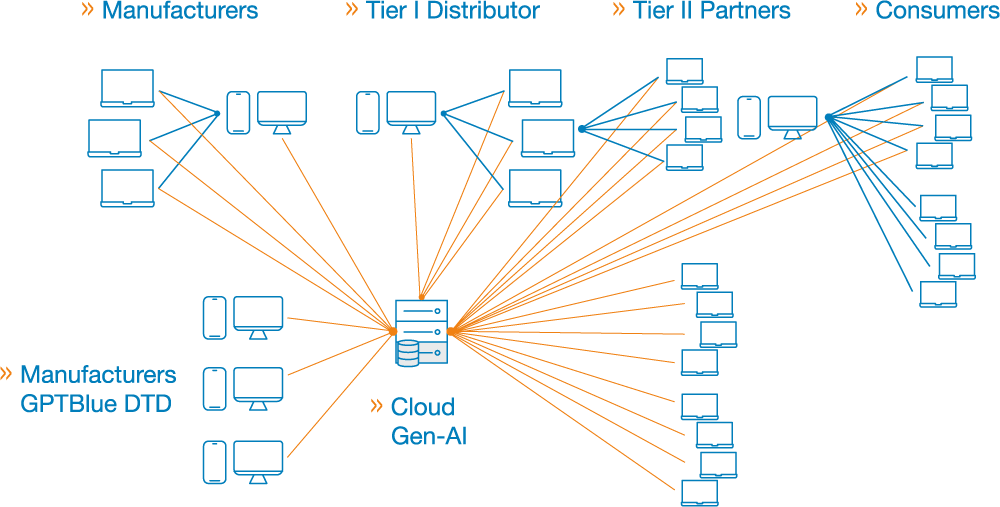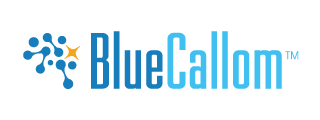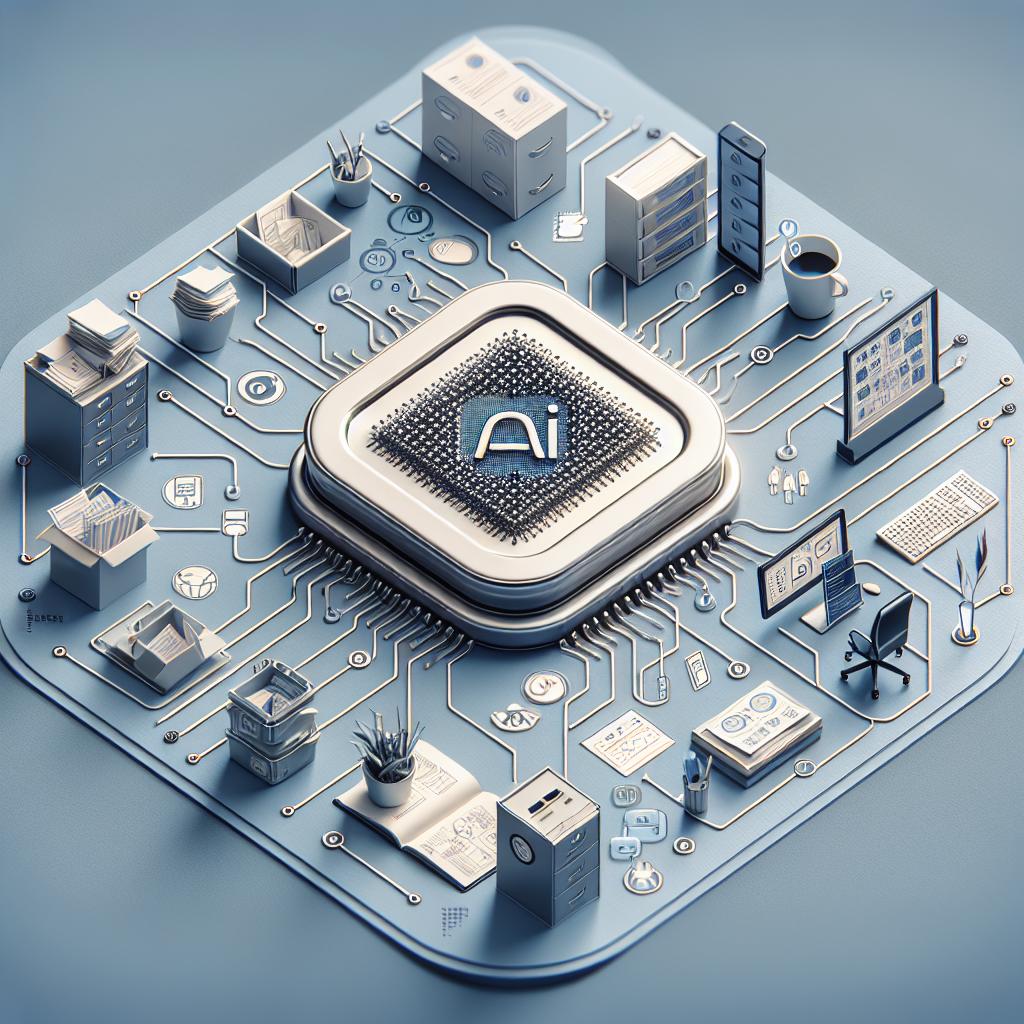Agentic AI we know
What is Agentic IT
The global IT world is driven by linear coded software.
Still today, people feed computers with data one record at a time, and as is. All the computer can do is retrieve it in different ways. One computer command after the other, step by step, linear processes, and errors in the data entry either stop the process or may lead to data corruption. There is no intelligence whatsoever. As a result, all business processes are manual. Yes, there is automation, but every automation is triggered by inputs, keyboards, mouse clicks, interactions with humans and machines – again, with no intelligence on the IT side. If you tell your voice-controlled car an address you want to be navigated to, every piece of the address must be without any mistakes. “I don’t know that” or equivalent answers are the most used responses of any chatbot running on conventional software.
What is Agentic IT
Agentic IT is a method for leveraging Agentic AI in conventional IT. It injects intelligence into every step of an enterprise workflow, even for completely uncleaned data, and spans a new layer above conventional applications.
Moreover, it uses AI agents for tasks that could not be created with conventional software.
This is not meant to be a temporary hack to prepare conventional IT software for replacement. It is built as an intelligent attempt to use the enormous amount of data that exists, regardless of their “cleanness,” and continue to use the existing data entry and process steps that work just fine and don’t need to be replaced. Yet it allows replacing processes that generate friction, delays, uncertainty, and other challenges that have evolved over time. Some processes may bring sales, administration, and logistics almost to a halt. If so, those can be replaced, and the replacement becomes part of the Agentic AI models that can seamlessly co-exist with the conventional IT.
It would be foolish to replace an entire IT system in a company with more than 250 employees and almost suicidal for enterprises with more than 20,000 employees.
Who benefits from Agentic IT
There are countless jobs, workflows, and processes that would benefit from Agentic IT, yet conventional software made it economically unfeasible.
For instance, conventional software makes a network compliance management system with pre-approval and fully digitised review processes virtually impossible. For Agentic AI, it is second nature. An end-to-end innovation system with nonlinear processes requiring extreme ingenuity and creativity is not possible with conventional software. Yet thinking, reasoning, and the ingenuity of Agentic AI change the game from the ground up. Business Transformation, strong competition, business model changes, and much more are now the domain of Agentic AI—but they were impossible with conventional software.
Agentic IT will augment Conventional IT
Agentic IT will not replace conventional IT – but over time it will replace conventional software, very slowly and steadily. Enterprises can’t just change or replace their ERP and CRM systems. And they don’t have to. But those systems will become insignificant in the next decade. See “Agentic IT Transformation below.
The most heard initial response – come on, this is too good to be true.
Agentic AI Solution & Management Platform (AgenticBlue)
From conventional IT software to the future of Agentic IT
it will understand it and use it to realize your ideas.
The transition: conventional IT to Agentic IT
Conventional software did a fantastic job in the past. But it can’t be upgraded. The leap from linear, non-intelligent conventional software to intelligent AI is just too big. In fact, Agentic AI is NOT an evolution from conventional software. AI arose from algorithmic mathematical thinking and unfolded its ultimate power with large language models (LLMs) and Generative Pre-Trained Transformers (GPT), which have equally much in common with computer software like the Abacus with a silicon chip. Is there a future for conventional software? Most likely for quite a while, yet with a rapidly declining relevance. The future of AI is agentic – and that can’t be changed.
________________________________
2) The future of IT is Agentic
Tell ChatGPT what agent you want to build, and it may start right away or possibly ask you a few more questions. You will get a solution description, the prompts that you would need, and write Python code for more complex algorithms, API access etc.
3) Today’s 47 million software developers.
Some estimates indicate that there are close to 50 million software developers worldwide. Will they all lose their jobs? They will need to adapt like a horse carriage coachman needed to learn to drive a car. Soon we had 100 times as many taxis as hours of carriages.
The demand for agents will grow faster than we can build them. Even though an AI will do the building process, somebody will need to tell it the intention and expected outcome. Sounds simple? It’s absolutely not. The human capability to articulate what we really want is limited. Therefore, we need Linguistics engineers who can translate the intention into something so powerful that we appreciate an AI more than we fear it.
Agentic IT – and some technology that makes the difference
Agent Communication
The Agent Communication Challenge
Agent communication is no big deal when you create a unique Agent who communicates with other unique agents who are already very well aware of each other by design. But what if an agent should also work in a different application, in another department? Moreover, what if an agent needs to communicate with other agents across company boundaries, like in a business partner network? What if this agent needs to be updated? Intelligent agent communication becomes a daunting task.
BlueCallom needed to invent a completely new structure to allow agents to communicate securely and reliably across a global platform.
Looking into Nature
To be exact, we were looking into neuroscience to learn how neural communication inside the brain works. Neurons communicate with other neurons. But if 87 Billion Neurons talk and list, that is a heck of a palaver. Somehow, it not only works but is a marvel of the natural system. We ended up leveraging our Genetic Computing Model, which we use elsewhere, right into the heart of this agent communication. Neuro-AI-Communication was born. Like in neural communication, we leverage the pre-synaptic and post-synaptic processing concept for our agent communication. Each agent has its own DNA. The DNA tells the corresponding agent whether the task is possible or not. If not, we look for another agent or let the process coordinator know that there is an issue.
Certified Agents
With the genetic assessment, AI can issue certificates that allow a process to be tested before it incurs token costs at runtime.
Genetic Computing and Neuro-AI-Communication became a starting point for an intelligent AI-Communication-Protocol or Language.
This technological shift made all the difference. Even though we are still in the infant stage of neuro-AI communication, it opened our minds to explore further and strengthened our neuro-AI research.
Agent Production
Agent Horizon
Many researchers believe Agentic AI will be implemented by a large part of businesses with more than 250 employees. Those approximately 400,000 companies produce, service, consult, or otherwise work with roughly 4 billion people. There are good reasons to believe that in the next 10 years, approximately 200,000 of those companies and 2 billion employees will work with AI agents. We estimate that in the next years the average number of agents per employee will exceed 10. The world will easily consume 20 billion or more agents. All of them need to be serviced and updated.
Make or Buy
Lime in almost all previous technological advances, the quantum leaps we experienced ignited a stream of company internal solutions, whether it was their core competency or not. These early adopters are a key driver of the new technology and helped the young companies to build new solutions as their core business, learned from those early adopters, and vice versa. In the 1950s, when no standardized computer operating system existed, companies developed operating systems, until there were commercially available OS to buy. In the 1980s, companies built their own word processing systems until a commercially developed system at a fraction of the price entered the market. Agentic AI is no different.
Since Feb. 2025 we are producing agents with AI. No more coding.
Commercially available Agentic AI solutions will go down in price as soon as production allows for building and selling thousands or even millions. We are very close and will see a massive change in consumption and pricing.
Agent Mega Factory
Building agents with AI has started, and we are making good progress. We estimate that our Agent Mega Factory will be fully operational before the end of this year.
Multitenancy
From home-grown solutions to integrated AI networks
In order to economically mass produce, service, and maintain AI Agents, they need to be hosted in a cloud for millions of users and serviced and updated simultaneously for everybody. Cloud-based Agent Hosting is similar to Software as a Service with some unique and fundamental differences. The technology to allow standard agents to communicate with other agents in thousands of different use cases and combinations needed a unique technological network concept. This is one of the unique benefits of AgenticBlue.
AgenticBlue comes with a unique networked multi tenant architecture.
Induced Productivity and workflow leverage
Unlike conventional multi-tenant SaaS solutions, including CRM, ERP, and other business applications, Networked Multi-Tenant Architecture allows you to cross company boundaries in a controlled and secure way. This is a critical development to extend productivity into business partner organizations by providing powerfully integrated AI functionality in extended sales processes, leveraged marketing, optimized financials, and fine-tuned and individualized logistics.

How Agentic IT will evolve and change IT from within.
1) A brief IT History
IT (Information Technology) has been a breakthrough for the industrialized world. In 1953, IBM introduced the first mass-produced computer. It could calculate and follow some step-by-step processes. The CPU was a linear processor that could do one process step at a time. And that concept has significantly evolved until today. And it had an interesting behavior we all know – till today: “Garbage-in Garbage-out”. The failure tolerance was zero, and to make it usable for humans, the effort in intuitive design was, and still is, bigger than the actual process development.
Updating large and complex ERP systems costs millions. User training is still a nightmare, and the irreversible problem of data chaos adds to the mix. We have all reached a point where scaling an enterprise is, to a large degree, limited by its IT capability. And while we do not want to see it, we still grow enterprises so that almost everybody feels unhealthy.
The most dramatic and destructive argument we heard in the past five years is: “Before we engage in innovation, we must clean up our internal mess.”
2) Agentic IT Transition
We expect Agentic IT to completely replace conventional software and its hardware. Intelligence is outperforming stiff and linear software; equally, GPU-based intelligence outperforms CPUs by an order of magnitude. With the inception of quantum computers, intelligence-based systems have a long way to go to fully leverage quantum computers, but they will. Conventional software and quantum computing would be like taking an 18-wheeler to purchase a cone of ice cream nearby. But this is not just a vision; here is a well-thought-out process we can implement already:
a) Process Connectivity
Agentic IT will integrate many intelligent workflow agents into the various business processes in R&D, sales, marketing, logistics, finance, hr, management, general operations, production, and more. Data still comes from conventional internal databases, external research, knowledge bases, industry data, etc.
b) Data cleansing
It is accepted that data cleansing is an unproductive engagement, and data will be kept as is. Retrieving the data will increasingly be conducted by AI that understands the quality level and can adjust its actions accordingly. As we already stated, it’s the end of Garbage-in, Garbage-out. Returning data into the system will be partly in the old system, knowing that the data is not perfect, but the added AI compute costs are a fraction of any attempt at data cleansing and software updates to prevent data chaos in the future. A larger part of AI-generated data and results will be stored in so-called vector databases, which have a modern and very different structure that caters to the architecture of an AI.



